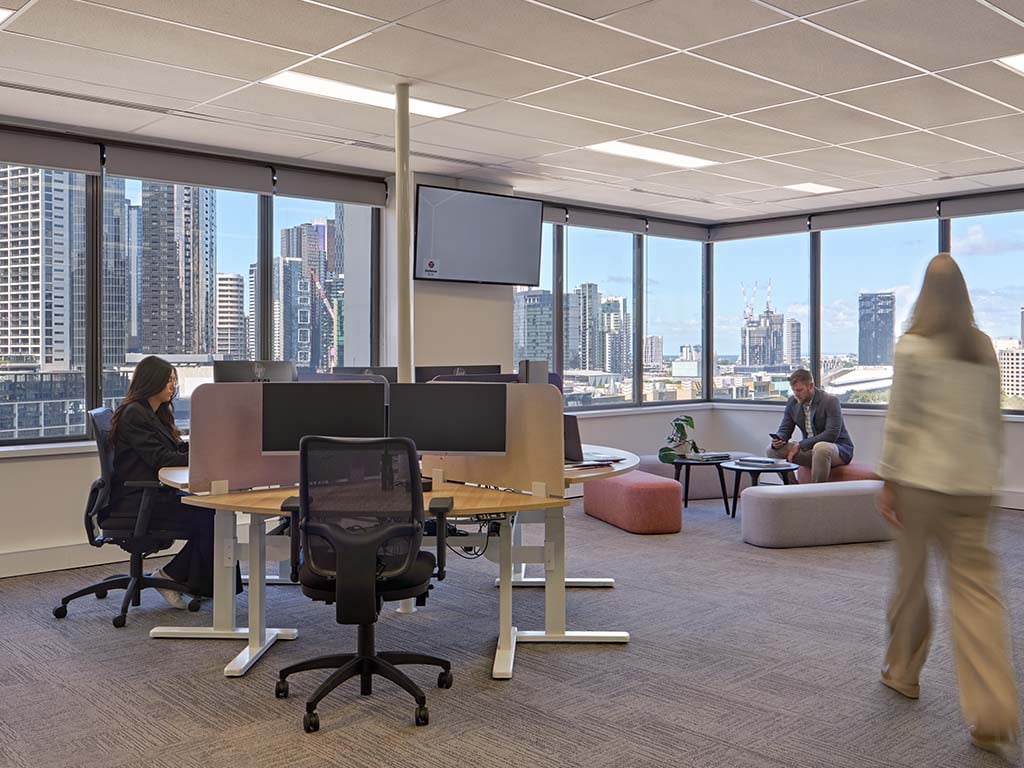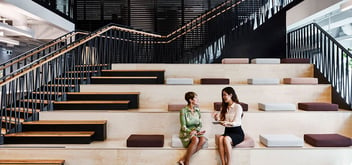Optimizing Office Space: Understanding Recommended Area per Person
Effective office space planning is essential to ensure that your workspace aligns with both current operations and future growth. According to the Building Code of Australia, the recommended office space per person is 10 square meters. However, many organizations opt for 12–14 square meters to enhance comfort and productivity. For businesses requiring additional privacy, such as legal or consulting firms, the office area per person may increase to 14–18 square meters. These figures exclude communal areas like kitchens and corridors, emphasizing the need for comprehensive planning. By assessing your specific needs and anticipating future changes, you can determine how much office space you need to design a workspace that is both efficient and adaptable.
Office space size is a primary consideration when you’re relocating, renewing a commercial lease or having employees return to the workplace. The right office area not only helps your employees stay productive and efficient but can support the growth of your business in the future.
If you’re not sure how much office space you really need, here’s what we typically factor in when we’re developing a customised workplace strategy for our clients.
Your organisational strategy
What type of organisation are you? Your physical and hybrid work environment reflects your brand, intentionally or unintentionally.
The first step to calculating the space you really need is determining how your employees or customers will use the environment. What type of tasks do your employees perform and how often do they spend time at their desks each day? How much storage space do they need – physical or digital?
Is your culture fostered around working collaboratively with each other where defined spaces encourage interaction, inspiration & innovation? How much storage space is required - physical or digital? You also need to consider how many meetings take place in your company, how large the meetings are and potential technologies to maximise collaborative efficiency.
Read more: How technology trends are impacting workplace design
Your business objectives
Before you get bogged down in details, it’s important to consider your overall business objectives and the purpose of your workplace relocation or redesign.
Are you hoping to improve staff productivity? Reduce building management costs? Enhance collaboration between teams? Focus the office experience towards a healthier, supportive and sustainable environment? Use your office more efficiently?
Understanding what you’re looking to achieve will help you determine how much floorspace you’ll need to achieve it.
Your spatial requirements
The Building Code of Australia requires a minimum of 10m2 per person for office workers, but many companies prefer to estimate their spatial requirements at a comfortable 12 to 14m2. Organisations that require more enclosed office spaces for client or acoustic privacy, such as law, psychology or accounting firms, may need to calculate their requirements at 14 to 18m2 per employee.
These figures are based on approximate net lettable area's and don’t include common building core zones such as kitchens, bathrooms, shared corridors, or lift lobby areas. They’re just estimations, so it’s best to talk to a workplace designer to get an accurate estimate before renting or buying new office space.
Read more: Top tips for budgeting an office move
Your future needs
As well as thinking about your current needs, it’s essential to consider the future needs of your business.
The only constant we can count on is change. Many commercial leases run for three years or more – which is an age in today’s fast paced world.
You’ll need to ensure capacity for additional employees if you’re thinking of expansion or operational consolidation. You should also consider how much office space you’ll need if you downsize, automate workflows, divest or outsource business functions, merge with another company or undergo a restructure where teams will grow or change in size.
The amount of space you need for technology is also likely to change in the future, particularly if you’re planning to move your IT infrastructure into the cloud or relocate your data centre operations offsite. By considering how your business will look in three, five or even 10 years’ time, you’re in a better position to choose a workplace flexible enough to grow and change as your business does. How can you create a workplace flexible enough to accommodate the future?
Need expert advice in developing a workplace strategy and design to make the right decision on the size of your next office move?
Read about how workplace design influences to enhance wellness and wellbeing in the workplace below or contact us and discover how we can help.







